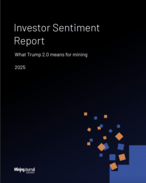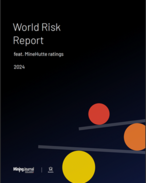There's only one thing that can truly drive the valuation of gold equities higher as the price of the metal continues to climb: investors.
It may seem an obvious or perhaps redundant statement, but it was the overarching message of a panel session at the 777ŔĎ»˘»ú Forum Europe in Zurich this week. Central banks and safe-haven demand are driving the buying of physical gold, but miners and explorers won't capture the full value of higher pricing until investors — and, specifically, generalist investors — come onboard.
Fund manager and senior analyst Cailey Barker, consultant Neil Adshead, and chief investment officer for Sarmarya Partners Wasif Latif each gave a resounding "yes" when asked if they would be buying gold right now, but they said it was important to note they are in the mining ‘space' and more familiar with the industry than most.
Those in the industry understand the importance of mining and metals and the value that can come from investing in the space, but there are many other industries fighting for the focus of the generalist investor.
YOU MIGHT ALSO LIKE
"When we see a large inflow into gold investment, that's really where the gold price will take off," Barker, a geologist and a fund manager, said.
"I don't see that at the moment. There's too much distraction."
He said from "our little universe", gold was incredibly important, but the wider investment community typically preferred things like big tech, cryptocurrencies, artificial intelligence, and other similar areas that could offer massive returns.
The panellists said for gold equities to attract investment, they needed to leverage higher gold prices to deliver tangible shareholder value.
"We need success stories," Barker said.
"We need to see this high gold price translated into massive free cash flow generation and return to shareholders, and I think until we see that sustained over a period of time, those equity valuations, sadly, will be continually depressed."
Latif added that the tech boom had to peak eventually, and only when this happened would investors start looking elsewhere to deploy their cash.
"What you're seeing now is similar to what we saw in the 2000 to 2002 technology bust; when the technology sector started to falter went into a bear market is when the alternatives began to open up," Latif said.
"And so we think that this is the point at which you're gonna start seeing more and more folks reluctantly getting into gold and bidding it up."
The panellists said psychology plays an important role, too: gold prices having recently broken through the US$3000 per ounce mark gave investors more confidence in its ability to act as a value driver rather than safe haven.
For Latif, his firm viewed the current record price of near $3100/oz as a "great entry price" for gold investors.
The psychological factor
Adshead said from a psychological perspective, it was worth noting that gold prices at current levels were around $100 per gram — a price metric not typically reported by explorers and producers but one that could be significant in the minds of investors.
"Not too long ago, a one-gram deposit would be regarded as this sort of low-grade, mediocre-quality deposit. Now a one-gram deposit it's $100 a tonne rock," Adshead said.
"That, psychologically, is pretty valuable rock. These mining companies and development companies are sitting on hundreds of millions of tonnes of one-gram material, it's actually a lot of inherent value there."
It would, naturally, create a winning cycle: investors turn to gold, which drives prices higher, which brings more investors to gold, driving prices higher, and so on. The question, then, becomes: how long this cycle will last?
Is it all as rosy as it seems?
When asked what could go wrong in the gold space, the panellists generally agreed that the primary threat in the equities space was misallocated capital.
As miners grow their treasuries amid record pricing, investors naturally begin to question what the miners are going to do with this money.
The warning to miners was to avoid risky acquisitions and consolidation that could crush shareholder value and instead look to "plant seeds" via partnerships in junior explorers, joint venture arrangements and investments in exploration.
This is, of course, not to mention the risk that perhaps gold prices aren't set for the astronomical rise many are predicting, though the panellists did not even consider that prices could fall in coming years.
The panellists pointed out that equity valuations in Australia were catching up quicker to gold price movements than other investment jurisdictions, even at the junior end, though Australian stocks still weren't quite capturing the full value.
The read-through of the situation, then, is that there's not much miners and explorers can do to erode value, but many available avenues to capture value.
Of course, in an era of uncertainty, tariffs and trade wars, no one can truly know what's going to happen next, but the hackneyed old cliché seems more pertinent than ever for gold: watch this space.














